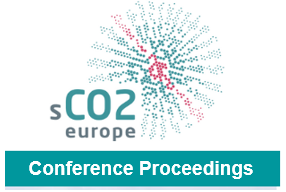Influence of variations of flue gas and ambient temperature on the dynamics and performance of a MW scale supercritical CO2 waste heat to power unit
Waste heat availability from many industrial plant can vary not only during start up and shut down of the process but also as a response to many other factors such as process control and varying demand of heat by diverse and distinct unit operations in the plant.
Implementing heat recovery from exhaust waste heat for power generation purposes, therefore, requires knowledge of the variation in the mass flow rate and temperature of the waste heat as well as variations in other conditions that affect the performance of the power generation system such as the temperature and flow rate of the heat sink medium.
This paper presents a numerical model and simulation results of the dynamic behaviour of a 2.0 MWe sCO2 power system, designed to recover heat from the exhaust gases of a cement manufacturing plant. The design employs an indirect heat recovery loop utilising thermal oil as the heat transfer medium and direct heat rejection from the CO2 gas cooler to the ambient.
The results show that fluctuations in the exhaust gas conditions within the operating range of the sCO2 power system are damped by the large quantity of heat transfer fluid in the indirect heat transfer loop and do not present a significant challenge to the control of the conditions entering the turbine. On the other hand, the limited thermal mass of the gas cooler does not have the capacity to absorb significant quantities of thermal energy and as a result the response of the sCO2 system to variations in ambient temperature is much faster than the response to changes in exhaust gas temperature and flow rate. This will require a more sophisticated control strategy to ensure the sCO2 temperature at inlet to the compressor and other components remains within the design operating range.
Vorschau

Zitieren
Rechte
Nutzung und Vervielfältigung:
Dieses Werk kann unter einer Creative Commons Namensnennung 4.0 Lizenz (CC BY 4.0)
Creative Commons Namensnennung 4.0 Lizenz (CC BY 4.0)
genutzt werden.
